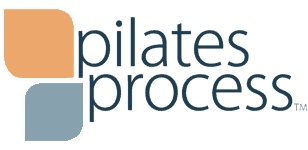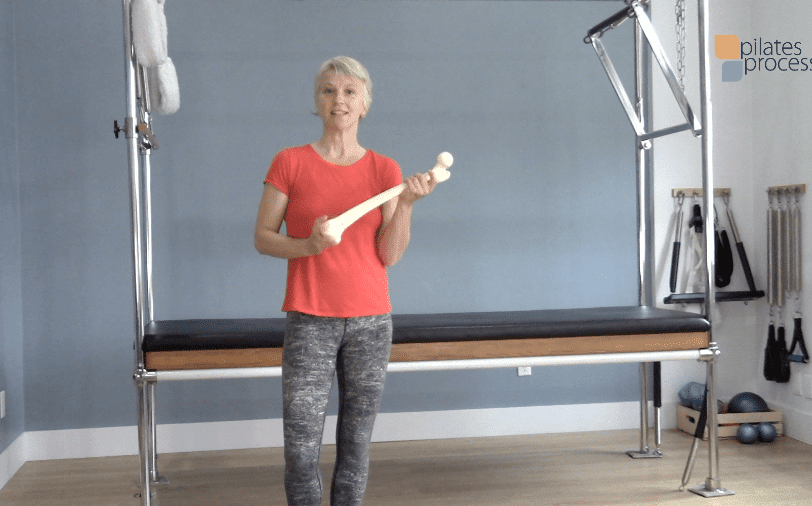You need stronger gluts. Your gluteal muscles need to be more balanced. Strengthen the gluts.
It’s a common refrain for every hip and knee issue that exists. From patellar femoral syndrome and hip impingements to tight IT bands and dropped arches, improving the strength of these big power muscles is usually a recommended component of recovery. Most clinicians and trainers, body workers and yes – us Pilates teachers too – are eager to prescribe glut exercises to remedy any problem from the lower back to the foot.
Easy to Prescribe and hard to accomplish. Trying to gain functional glut strength can seem like a forever goal. For some people, faithful adherence to a gluteal strengthening regime does not seem to produce the intended results: tracking remains poor, knee pain persists, hip flexors are grippy and functional glut strength remains elusive.
So if you’ve squatted, stretched the hip flexors, rolled IT Bands and bridged, with minimal success it may help to look at hip centering.
Joint Centering and Why It Matters
All joints have a neutral position – a position of balance where they are not shifted out of alignment. In the hip socket, that means the femur head, the round ball of the thigh bone, is positioned in the centre of its socket (located on the pelvis). In movement the body adjusts this femur head with tiny shifts and glides within the joint that keep things centred and moving around a central axis. It’s what we refer to as Bone Rhythms in the Franklin Method® and these micro shifts allows force to be evenly distributed and muscles to activate – like gluts powering us up from a squat.
Joint centring can seem like a much more elusive concept than glut strengthening. It doesn’t have to be complicated though. It can be as simple as learning a few exercises with some awareness and then doing them prior to glut strengthening. Or replacing gluts with centring for a few weeks and seeing how you fare.
Find Your Hip Sockets
To centre the hip it helps to clearly picture or better, to sense, where your hip joints are located, so take a moment with these.
- Wake up your hips with Franklin Tapping. In standing, use your fingers lightly tap the front of your pelvis and thigh for 30 seconds to wake up your awareness.
- Lift the knee lightly towards the chest and lower it down repeatedly. As you do this keep the fingers in the crease of the hip as it folds. The hip joint is often lower than we think, sitting just wide of the pubic bone. We tend to image the hip much higher on the pelvis than it actually is.
- Because we want to minimize hip flexor muscles as we do this, imagine that there is a string attached from the knee to the ceiling. The string lifts the knee and the front of the hip sinks or drops. Play with this a few times and see if it gets easier.
Why We Love to Hinge
The hinge, or passive hip flexion, is an often accessible way to sense hip movement and allow the femur head to sit further back and more dropped in the socket as is frequently needed.
- Kneeling on all fours (quadruped), with a lengthened spine. Imagine the hip joints. Check in that you are relaxing the abs and the gluts. This position, through gravity alone, can allow the femur head to nudge a little further back in the joint. Rock back off the hands a little ways and then return. As you repeat this, try to sense the gluts releasing or stretching as needs to happen in hip flexion.
- Standing Hinge. My personal favourite. Stand with one foot forward in a pedestrian stance. Squeeze and release your bum muscles a few times. Keep them released as you fold forward at the hips – letting the gluts stretch and release. Return to upright, lightly using the gluts to help. Repeat this with a focus on allowing the stretch or widening of the gluts and pelvis.
This video clip is an excerpt from a longer hip focused class and will talk you through hinging.
Take it to a Squat
If you want to now try a squat, don’t throw away the hinge imagery – it’s part of the squat after all. Set your feet up in whatever comfortable stance you like. Send the knees forward going to whatever range is comfortable. Go for ease and let gravity help.
Yes. I did say to send the knees forward. Unless you’re lifting olympic level weights, let the knees fold forward over the toes as nature intended. Try to find a perfectly comfortable and easy squat before adding weights.
Nothing acts in isolation.
That may be enough to go on to improve your hip function. Or not. Nothing acts in isolation and there may be more areas to tight hips than just this. Addressing pelvic floor function and foot mobility, can be key for many people.
Learning to stand in a centred hip posture can be harder than moving well through a hinge – but I’ll leave that for a future blog post.
The bottom line with seeking better function is to expand your focus to a more comprehensive exercise approach if you’re not seeing change.
For related thoughts on glut exercises see my previous posts on Clamshells and Hip Flexors.
Laura Helsel Gauthier
Pilates Process™ Director
Writer – Presenter – Franklin Method® Educator

